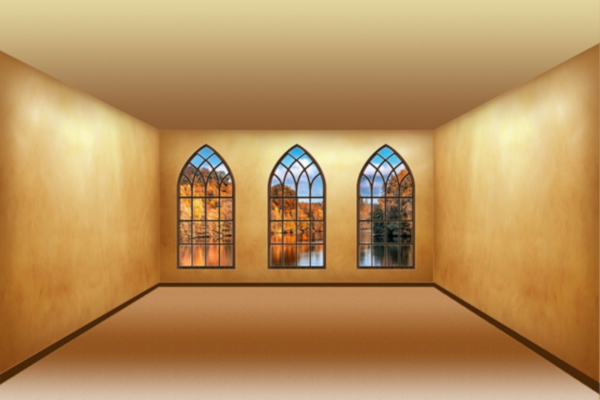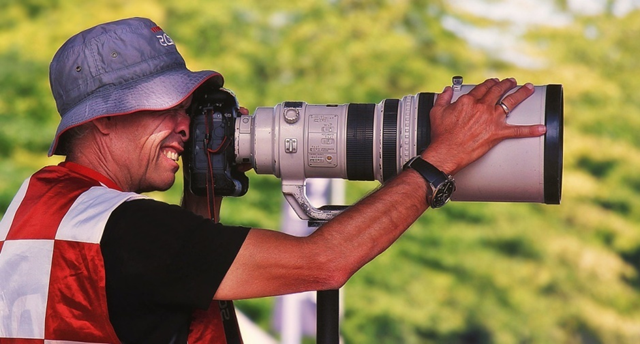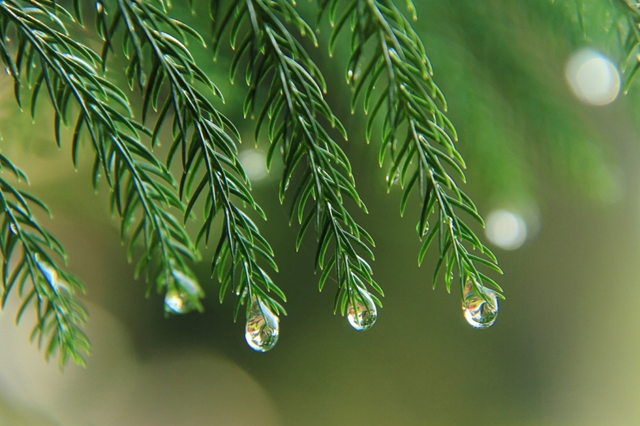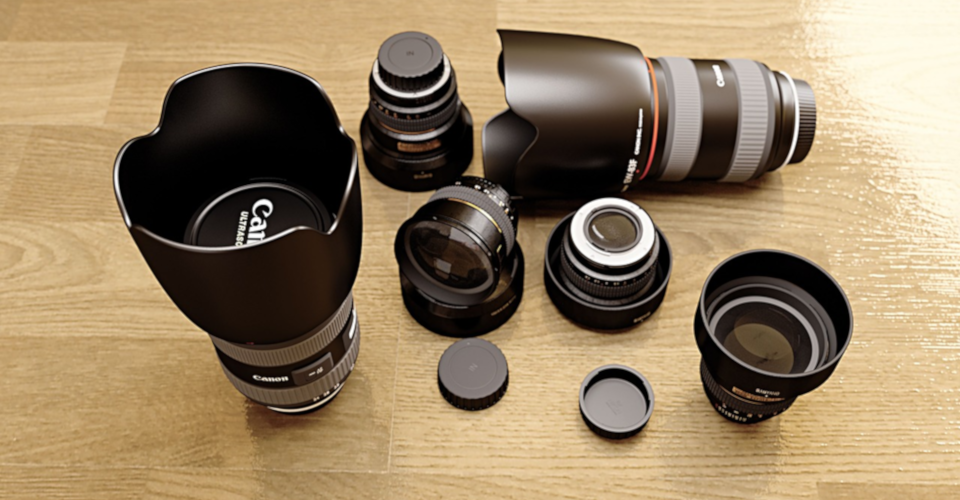Lens Comparison: How to Choose a Camera Lens
Lenses are known as the eyes of a camera. They greatly influence the quality of images that a camera can produce. Most cameras come with a standard kit lens. You may be surprised to know that most camera users end up using only the kit lens.
However, there are a ton of other lenses in the market which can be used for very specific situations. These lenses can produce results that are way better than those attained by a kit lens. The trick is in knowing how to choose the right lens for the right purpose.
Additionally, one also needs to purchase the best lens within each category. There are wide-angle lenses, prime lenses, zoom lenses, telephoto lenses, etc. In this article, we will compare various lenses across various metrics like aperture, focal length, size, price, and other important considerations.
Focal length
The focal length of a lens is a number that you see in the units mm. It generally is a range from 30-50mm or 20-80mm. The higher this number, the more your lens can zoom in to a subject. The lower the number, the wider or bigger will be the view that you will get. A higher focal length is used when you want the focus to be on a smaller aspect of the frame.
One important point to note is that the focal length number is not always a range. Some lenses will have only one number in mm. Such a lens is a prime lens. You cannot zoom with a prime lens. In order to get closer to the subject or get a wider view, you have physically to move forward and backward.
| Camera | Focal Length Range |
|---|---|
| Sigma 10-20mm f/3.5 EX DC HSM | 10 to 20 mm |
| Nikon AF-S FX NIKKOR 50mm f/1.8 | 50 mm |
| Canon EF 50mm f/1.8 STM | 50 mm |
| Sigma 17-50mm f/2.8 EX DC HSM | 17 to 50 mm |
| Tamron Auto Focus 70-300mm f/4.0-5.6 | 70 to 300 mm |
| AF-S DX Nkr 18-200mm F/3.5-5.6G ED VR II | 18 to 200 mm |
| Canon EF 75-300mm Telephoto | 75 to 300 mm |
| Tamron AF 70-300mm f/4.0-5.6 | 70 to 300 mm |
| Canon EF 17-40mm USM Ultra-Wide Angle | 17 to 40 mm |
Full Frame vs Crop Frame
Camera sensors are either full frame or crop frame. Your lens will also be affected by the size of the camera sensor. Full frame cameras will mean the same focal length that is listed on the lens. A crop sensor camera means that the focal length is multiplied by 1.5.
For example, if you use a 17-50mm lens. On a full frame camera body, the focal length that you will get by using this lens will be 17 to 50 mm. However, if you mount that lens on a crop sensor camera, then your focal length range is now 25.5 mm to 75 mm.
Some lenses, especially the Nikon ones, have an Fx or a Dx written on them. This signifies the sensor with which they are optimized for end-use. A Dx lens is optimized to work with a crop-sensor camera while an Fx lens is designed to work with a full-frame camera.
Remember that a Dx lens works on a full-frame camera body and an Fx lens works on a crop-sensor body. However, if you use a Dx lens on a full-frame camera, then you will get a cropped view. But, if you use an Fx lens on a crop-frame camera, then you will have no issues.
| Camera | Full vs Crop |
|---|---|
| Sigma 10-20mm f/3.5 EX DC HSM | Crop Frame |
| Nikon AF-S FX NIKKOR 50mm f/1.8 | Full Frame |
| Canon EF 50mm f/1.8 STM | Dual Format |
| Sigma 17-50mm f/2.8 EX DC HSM | Crop Frame |
| Tamron Auto Focus 70-300mm f/4.0-5.6 | Dual Format |
| AF-S DX Nkr 18-200mm F/3.5-5.6G ED VR II | Crop Frame |
| Canon EF 75-300mm Telephoto | Dual Format |
| Tamron AF 70-300mm f/4.0-5.6 | Dual Format |
| Canon EF 17-40mm USM Ultra-Wide Angle | Dual Format |
Aperture
Aperture is the F-number that you see on the lens. It is expressed as F1.8, f/1.8, or simply 1:1.8. Aperture is a metric that indicates the amount of light that can pass through the lens and onto the sensor. Logically, the higher the aperture or the F-number, the more the light that can pass through…right? Wrong! That is not how it works!
A lower F-number indicates a wider aperture which allows more light to pass through. So, a lens with a low F-number will perform well in low-light or night-time conditions.
The catch or the balancing act that one needs to do with aperture is more light vs depth of field. While a low F-number allows more light to reach the sensor, it also produces a shallower depth of field. A shallow depth of field means that the focus subject will be clear but the surrounding elements and the background will be fuzzy.
Lenses can either have a fixed aperture or a variable aperture. In a variable option, the aperture changes with the zoom or focal length. So, in a 75-300mm f/4.0 – 5.6 lens, the widest aperture at 4.0 will have a focal length of 75mm while the narrowest aperture will have a focal length of 300mm.
| Camera | Aperture |
|---|---|
| Sigma 10-20mm f/3.5 EX DC HSM | 3.5 (fixed) |
| Nikon AF-S FX NIKKOR 50mm f/1.8 | 1.8 (fixed) |
| Canon EF 50mm f/1.8 STM | 1.8 (fixed) |
| Sigma 17-50mm f/2.8 EX DC HSM | 2.8 (fixed) |
| Tamron Auto Focus 70-300mm f/4.0-5.6 | 4 to 5.6 (variable) |
| AF-S DX Nkr 18-200mm F/3.5-5.6G ED VR II | 3.5 to 5.6 (variable) |
| Canon EF 75-300mm Telephoto | 4 to 5.6 (variable) |
| Tamron AF 70-300mm f/4.0-5.6 | 4 to 5.6 (variable) |
| Canon EF 17-40mm USM Ultra-Wide Angle | 4 (fixed) |
Purpose of use
As mentioned above, different lenses are suited for different photography environments. There are various scenarios in which a particular lens becomes a specialist lens. The various photography environments are listed below:
Ultra-wide angles
If you are shooting a landscape or external architecture, then you want to be able to capture the entire scene or building in one frame. You also want to be able to do this without standing hundreds of feet away. In such a situation, you need an ultra-wide-angle lens.
Another scenario for using an ultra-wide-angle lens is when you are taking pictures inside a building or a mall. When you are indoors, you are restricted in how far away you can move from your subject. If your subject requires you to capture a wide area from a relatively close distance, then you need a wide-angle lens.
Lenses with a focal length below 24mm are usually considered to be ultra-wide-angle lenses.

Wide angles
Wide-angle lenses are similar to ultra-wides with slightly higher focal lengths. They are also used to shoot buildings and indoor subjects which need to be captured completely (e.g. a large group of people). Some landscape photographs can also be taken using wide-angle lenses.
Interestingly, even portrait photographs can be taken using wide-angle lenses. These are often portraits of a person or subject placed in a specific situation. The wide-angle lens allows you to take the picture of the subject along with the relevant background which depicts the situation in which the subject is.
Wide-angle lenses tend to have a focal length between 24mm and 35mm.

Regular shooting
A regular scenario can be either a portrait, a simple landscape, street photography, or just about any situation that you encounter. Think of the times when you are traveling and have just one lens which works in all situations throughout the day. That would be a regular zoom lens.
The commonly accepted focal length for a regular zoom lens is 35mm to 70mm. Some prime lenses can also be used as normal lenses. However, prime lenses do not allow for the zooming function. Hence, a regular lens would be one that has a mid-range focal length and can allow some level of zooming function.
Telephoto or high-zoom
Imagine going on a safari or to a national park for taking pictures of wildlife/birds. Such a situation would demand a lens that can zoom in very close to an animal from a safe distance. Such shots are possible by using a telephoto lens.
Other situations for using a telephoto lens can be sports events where you try to take pictures of the athletes from the audience seating area. If you want a close up of the athlete with a high zooming capability, then you need to use a telephoto or superzoom lens.
The focal lengths for telephoto or high-zoom lenses can range from 70mm to over 200mm.

Macro-shots
Macros are another word for close-up photography. Remember the time you took a close up picture of a flower, with the dewdrop just about to fall from one of the petals? Or the time when you took a close up picture of an insect? That was marco photography.
You obviously need a lens that has a high focal length number. You have to be able to capture all the details. Macro lenses have a small depth of field. Focal lengths can range between 40mm and 200mm. Besides close-up photos, macro lenses are also great for portrait photographs or pictures that need a bokeh effect.

Prime Lens
Our final scenario is one where you require sharp high-quality images. This could be a wedding event, a birthday party, or simply portrait/street photography. If you want sharp images with a blurry background, or if you are going to shoot in low-light conditions, then a prime lens is what you need.
Prime lenses are also great options for beginners. Since these lenses cannot zoom, the photographer has to think about the composition, the framing, and other basic elements of photography when using a prime lens. You will literally have to move on your feet and get closer (or farther) to the subject in order to frame your picture correctly.

| Camera | Best Use Case |
|---|---|
| Sigma 10-20mm f/3.5 EX DC HSM | Ultra-Wide Angle |
| Tamron AF 70-300mm f/4.0-5.6 | Wide Angle (for Nikon) |
| Canon EF 17-40mm USM Ultra-Wide Angle | Wide Angle (for Canon) |
| Sigma 17-50mm f/2.8 EX DC HSM | Regular Shooting |
| AF-S DX Nkr 18-200mm F/3.5-5.6G ED VR II | Regular Shooting |
| Canon EF 75-300mm Telephoto | Telephoto/High-Zoom |
| Tamron Auto Focus 70-300mm f/4.0-5.6 | Macro |
| Nikon AF-S FX NIKKOR 50mm f/1.8 | Prime Lens (for Nikon) |
| Canon EF 50mm f/1.8 STM | Prime Lens (for Canon) |
Price
You can get the best lens with the most incredible features and specifications. But, at the end of the day, you as the purchaser are going to ask one question without fail – What is the price? How much money is it going to cost you to buy that wide-aperture lens or a telephoto lens with a monster focal length?
Price is going to be a really important factor for anyone who has a budget for his/her photography pursuits. The market is so wide that you can buy a lens for $100 or a lens that can easily cross $1000.
Buying the DSLR body itself is going to cost you some serious money. Investing in a set of good lenses will add to your photography equipment bill. Lenses can be so expensive that many photographers are only able to build their lens collection over a long period of time.
| Camera | Price |
|---|---|
| Canon EF 75-300mm Telephoto | $106 |
| Canon EF 50mm f/1.8 STM | $125 |
| Tamron Auto Focus 70-300mm f/4.0-5.6 | $129 |
| Nikon AF-S FX NIKKOR 50mm f/1.8 | $177 |
| Sigma 17-50mm f/2.8 EX DC HSM | $295 |
| Sigma 10-20mm f/3.5 EX DC HSM | $329 |
| Tamron AF 70-300mm f/4.0-5.6 | $449 |
| Canon EF 17-40mm USM Ultra-Wide Angle | $499 |
| AF-S DX Nkr 18-200mm F/3.5-5.6G ED VR II | $586 |
So which lens is best overall?
There is no overall best lens because each lens is highly useful in a specific situation. If you do not want to carry around too many lenses and are simply looking for one lens to begin with, then the Sigma 17-50mm F/2.8 EX DC HSM is a great option.
It has a decent range of 17mm to 50mm which covers the wide-angle and the regular range. It also has a reasonably low F-number (2.8) which helps deliver a decent low-light performance. You may not need a prime lens if you have the Sigma 17-50mm f/2.8 with you.
The one other lens that you could carry along with the Sigma lens is a telephoto lens. A combination of these two lenses should cover a wide range of focal lengths and photography scenarios.
Which lens offers the best value for money?
Different types of lenses will have different price ranges. So, it is not fair to compare all of the lenses in our list and rate them according to their prices. A Toyota Corolla will not be in the same price range as a Ferrari and both are used for different purposes. Much in the same way, different types of lenses are used for different applications.
But, if we had to rate one lens for its affordability, then we feel that the Canon EF 75mm to 300mm telephoto lens offers excellent value. Telephoto lenses are not cheap and to find one for a shade over $100, which is what the Canon EF 75-300mm is priced at, is representative of getting plenty of bang for the buck.
Other factors to consider
One metric that has not been explored in the comparisons above is the size and weight of the lens. This could be of particular significance for photographers who wish to travel light. Adventure enthusiasts who hike hills and mountains may also want compact gear.
Getting a lens with a low F-number and a very high focal number will add bulk to the lens body. The laws of physics dictate that and you cannot really do anything to mitigate that problem. So, quality and features are always balanced against weight, bulkiness, and price.
The other thing to note is that it is not necessary to only use the lens from the manufacturer of your camera body. Lenses made by third party manufacturers can also be quite good. For example, there are some great Sigma and Tamron lenses that can be mounted on a Nikon camera body. You should pay more attention to the specs, performance, and the reviews of a particular lens rather than worry whether it is a Canon or a Nikon.

